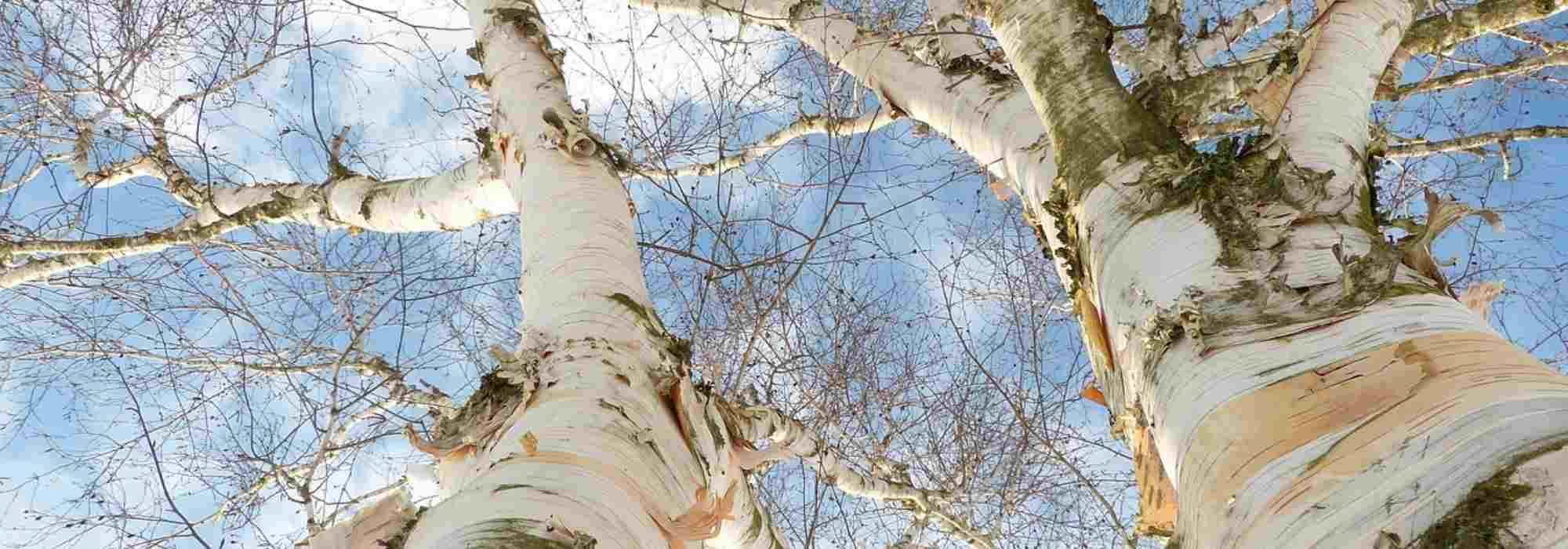
The most beautiful barks
A selection of trees, shrubs and bushes with remarkable barks
Contents
A plant is often chosen for its foliage and flowering, even its fruit. Bark is one of the elements less noticed, yet it creates a poetic world in mid-winter thanks to the silhouette of trees thus revealed under new colours and often unusual texture.
Many trees take on a truly sculptural air in the garden, their bark peeling in plates or strips. Striate, cracked, fissured, or smooth, barks then become highly ornamental and steal the show for several months. They take, depending on the tree, surprising hues, bicoloured or even multicoloured, white, yellow, orange, red, green, black, glossy or matte. You can combine them with a range of perennials and bushes to create sumptuous winter gardens. Many trees, and even some bushes, develop interesting bark after several years, so don’t hesitate to plant your trees early in your landscaping to enjoy them fully!
Here is a selection of the most beautiful barks in the plant world, to give your garden a highly photogenic artistic effect.
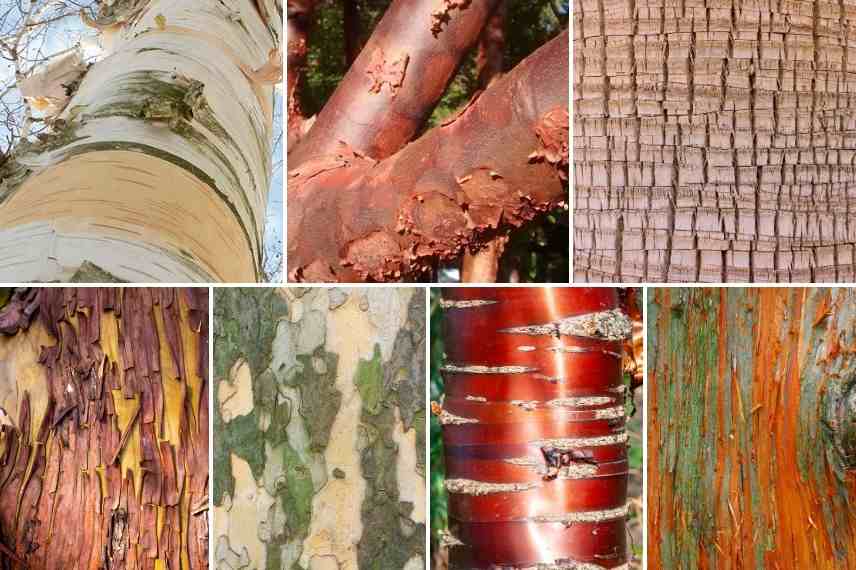
Birch, Acer griseum, palm, Arbutus, plane tree, Prunus serrula, Cryptomeria (Japanese cedar)… There is a very rich palette of colours and textures among barks!
Prunus serrula: mahogany sheen
Let’s start this festival of bark with one of its most beautiful representatives with its easily recognisable mahogany colour. The Tibetan cherry boasts, in fact, bark with absolutely incredible coppery to red hues, standing out particularly in winter. Shiny bark is extremely decorative, peeling little by little into horizontal strips. It’s really for its bark that you will plant this cherry, its spring white flowering remaining rather unremarkable. It reaches 5–6 m in height and prefers full sun or partial shade. It makes a striking feature in winter garden scenes with its very theatrical appearance, and offers a beautiful contrast with white bark of birch trees.
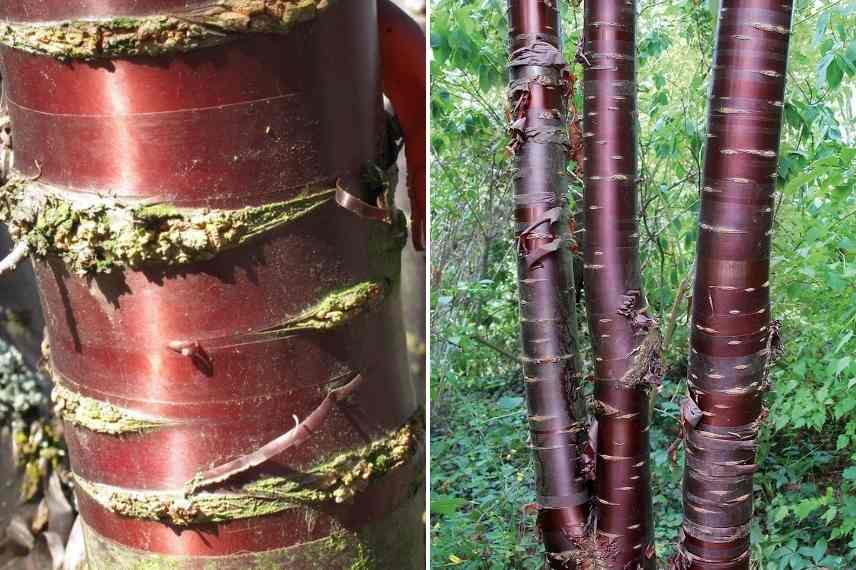
Prunus serrula and Prunus serrula ‘Branklyn’ (Photo: E. Westerveld)
Read also
Twisted trees and shrubsBirches: an infinite range of colours
Birches are fascinating for their fairy-like silhouette in midwinter, capturing winter sunlight like no other. They offer the widest range of bark within a single species, from pure white to coppery-pink in Betula albosinensis, to amber.
Difficult therefore to pick just one for this selection… I suggest two varieties with very different colours :
- Betula albosinensis ‘Fascination’, is a remarkable birch derived from the Chinese birch, with bark surprisingly copper to orange-brown, peeling in long, thin strips. When young, trunk is sometimes covered with a bluish bloom that is also decorative. This birch needs a sunny position; it will reach 8 m at maturity (it grows slowly).
- Betula utilis jacquemontii (or Doorenbos) is one of the magnificent white-barked birches. Very young, by about six years, the Himalayan birch begins to exfoliate in flakes, revealing brown wood beneath a very pure white bark. Its foliage, greener than other varieties, really contrasts with the white bark, producing a very handsome summer contrast. Reaching up to 10 m, with an upright habit, it is often grown as coppice shoots (multi-stemmed). Be sure to clear around the trunk to showcase its bark. Like many birches it has no particular soil requirements and is ultra-hardy. It is also enhanced by sun, particularly morning sun that gives it a pink flush in winter, and late-afternoon light.
These birches have other assets in other seasons: enjoy their charming spring flowering in long aments, their light summer shade, and their golden-yellow colours in autumn! …before they transform into sculptural winter trees.
Among other outstanding cultivars: ‘Kashmir White’, ‘Costata’ and papyrifera.
→ Find out more with our full sheet on the Birch and the most beautiful birch barks : also discover Olivier’s video on the Himalayan birch
Discover other Trees and large shrubs
View all →Available in 0 sizes
Available in 1 sizes
Available in 1 sizes
Available in 1 sizes
Available in 1 sizes
Available in 1 sizes
Available in 1 sizes
Available in 1 sizes
Available in 2 sizes
Available in 1 sizes
Acer davidii and Acer capillipes: snakebark maples
Few barks display green hues. Among the trees most interesting for this uncommon bark colour are two exceptional maples, both called Snakebark Maples: L’Acer davidii, (or David’s maple) and the Acer capillipes (or red-marbled maple) display a magnificent olive-green bark, mottled (striate) with white and grey. It indeed evokes reptile skin, with a trunk that remains smooth. Over time the bark of Acer capillipes will crack somewhat and will also take on a reddish-brown tinge. L’Acer capillipes grows quickly in shade or partial shade, whereas Acer davidii grows a little more slowly, preferring partial shade, which helps preserve a well-marginate bark. Both turn yellow then red in autumn. Both trees remain small, at about 9 m tall.
Numerous cultivars exist within both maple species with slightly different colourations, but always that superb jaspé aspect. The Acer davidii ‘Viper’ will remain much more modest in size (no more than 4 m tall), suitable for a town garden, for example.
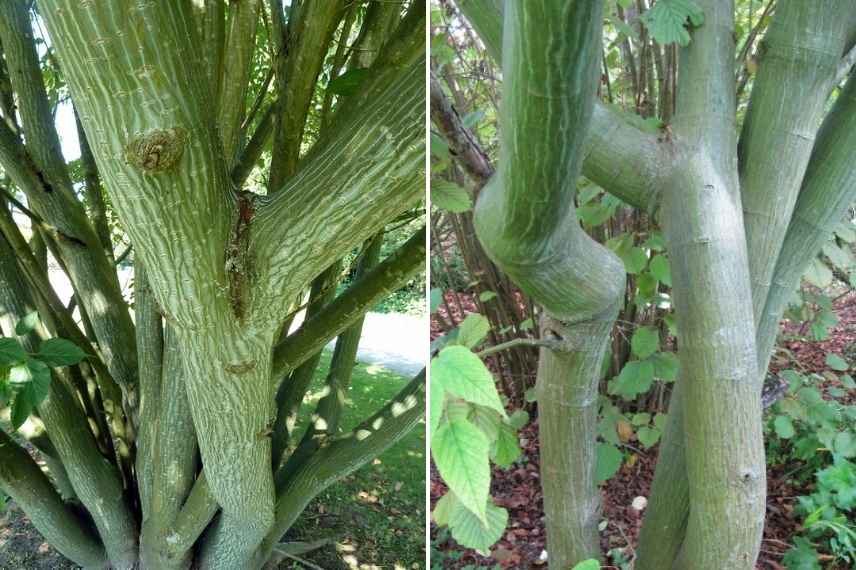
Acer davidii (© W. Cutler), and Acer capillipes (© L. Enking)
→ Learn more about Maples in our complete fact sheet
Acer griseum: paperbark maple
Acer griseum or paperbark maple is among trees whose bark peels in a very beautiful way, into papyraceous brown‑orange rolls resembling cinnamon sticks. The bark of Acer griseum is truly remarkable, exfoliating in thin flakes shimmering in the sun, making Acer griseum one of the most beautiful trees to plant in a garden. The new “skin” of the year will be more colourful than the previous one. Of modest size (between 6 and 8 m at full maturity), with a rather short trunk and a narrow habit, often grown as coppice shoots (multi‑trunk) it can occupy even limited spaces. Note that it grows fairly slowly. Leaves colour like many maples in autumn, taking scarlet red hues. Ultra‑hardy, certainly the variety to adopt if you wish to compose winter scenes..
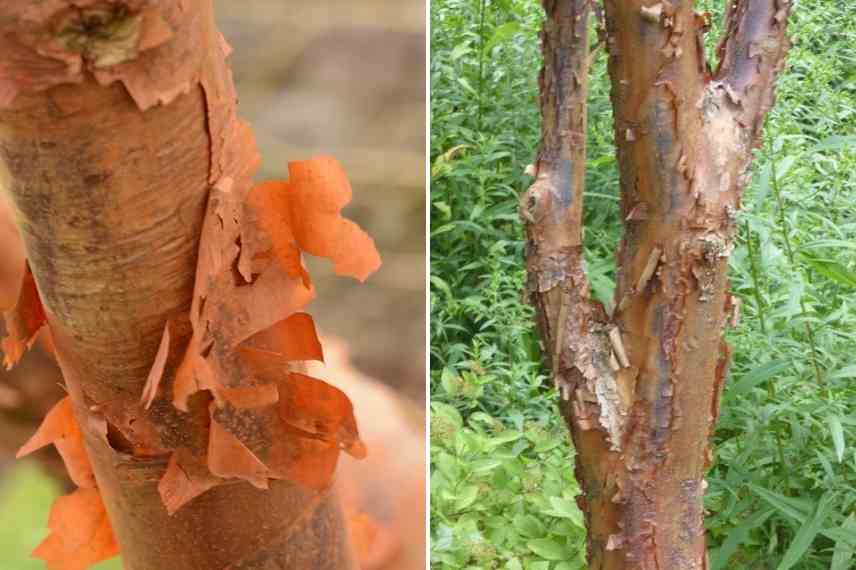
Acer griseum (© C. Bud and G. David)
Prunus maackii 'Amber Beauty' : amber-hued sheen
Another cherry with remarkable bark, native to Korea and Manchuria. With a golden-brown to amber colour, ranging through coppery-yellow, Prunus maackii ‘Amber Beauty’ exfoliates in transverse bands, revealing a very decorative white to greyish colour. Remaining small too (around 7 m tall), extremely hardy, Manchurian cherry brings a honeyed, highly ornamental tone to the winter garden. Its bark is quickly highlighted but becomes less luminous with age. Plant it in direct or indirect sun to enjoy the magical reflections on the trunk.
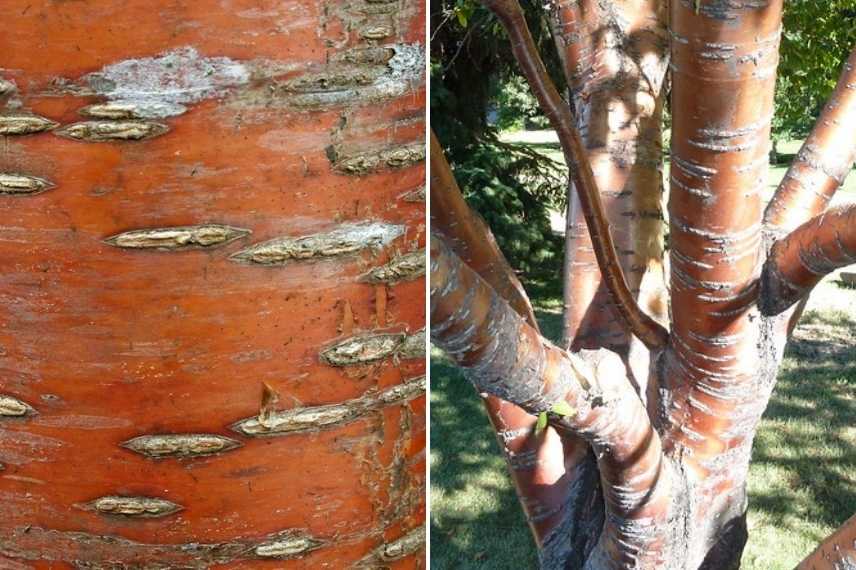
Prunus maackii ‘Amber Beauty’ (Right-hand photo: W. Cutler)
Eucalyptus niphophila: whiteness of its patchy bark
Birches are not the only trees to offer wonderful white contrasts in the garden! Eucalypts, though evergreen, display a lovely elegance with their bark peeling every year.Their bark is of the plate-type, coming away in large strips.
L’Eucalyptus niphophila (or snow gum) is a variety of truly modest proportions for this type of tree, allowing you to plant it once you have a medium-sized garden (it will reach 7 m in height with a spreading of about 5 m). Its white bark is magnificent, revealing grey, brown to red patches. The leaves are of course also part of its appeal: lanceolate, grey-blue, as are its creamy pompon flowers, delightful in spring. It needs plenty of sun. You can plant it in mountain regions as it is very hardy. As with birches, remove its lowest branches to best reveal the trunk, showcase its bark and its graphic habit.
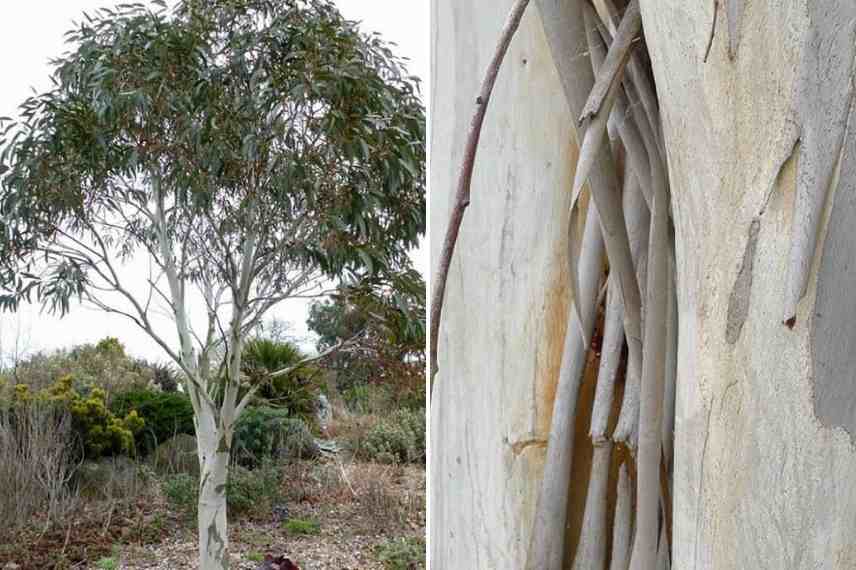
Eucalyptus niphophila. On the right, bark of an E. pauciflora (© J. Tann)
The Eucalyptus pauciflora ‘Debeuzevillei’ and ‘Deglupta’ are also among the finest plate-barked specimens; Eucalyptus coccifera peels in pinkish plates.
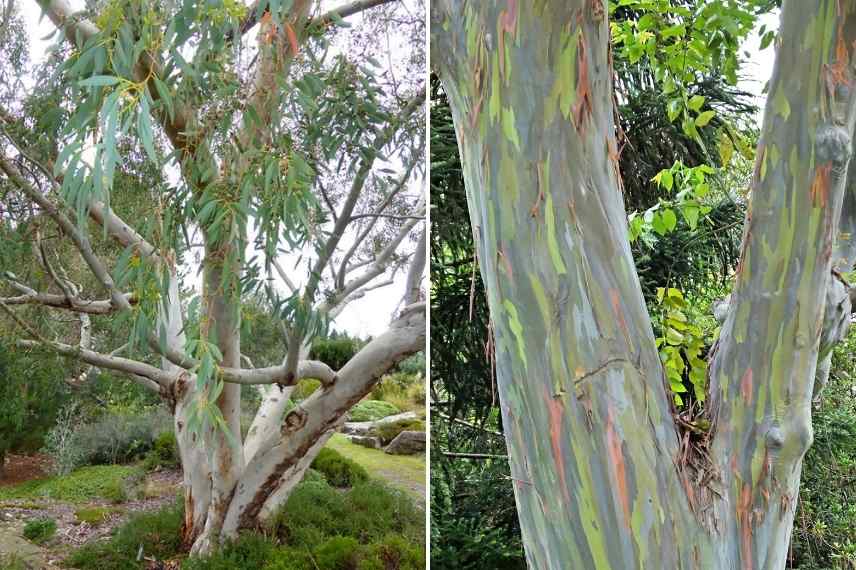
Eucalyptus coccifera (© W. Cutler), and Eucalyptus ‘Deglupta’ on the right
→ Find out more about the Eucalyptus in our full fact sheet
Bushes with remarkable bark
Bushes and shrubs are by no means overlooked when it comes to bark! They even deserve a place of their own, so useful to enliven gardens in the dullest season.
One can distinguish decorative bark proper on the trunk of certain bushes, and decorative branches: Coloured-wood Cornus (Alba, Stolonifera or Sanguinea), willows, but also Rubus thibenatus ‘Silver Fern’,…
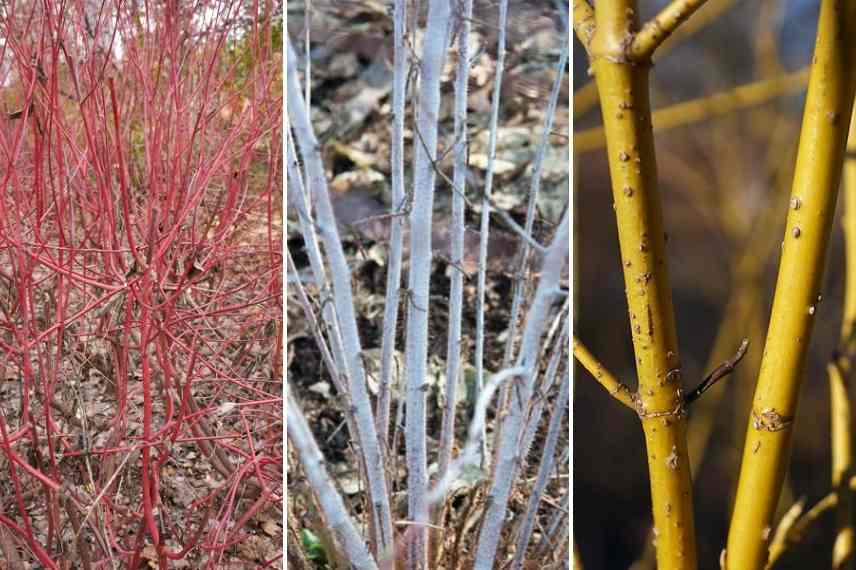
Coloured wood in winter of Cornus and Rubus Thibetanus
Among beautiful bark that is less often noticed — because these bushes frequently have high ornamental value in summer — most mature well with age: Lagerstroemia, Heptacodium, Stewartia pseudocamelia, Clethra barbinervis (silver-grey wood with reddish-brown inner bark), Arbutus unedo (strawberry tree), Arctostaphylos…
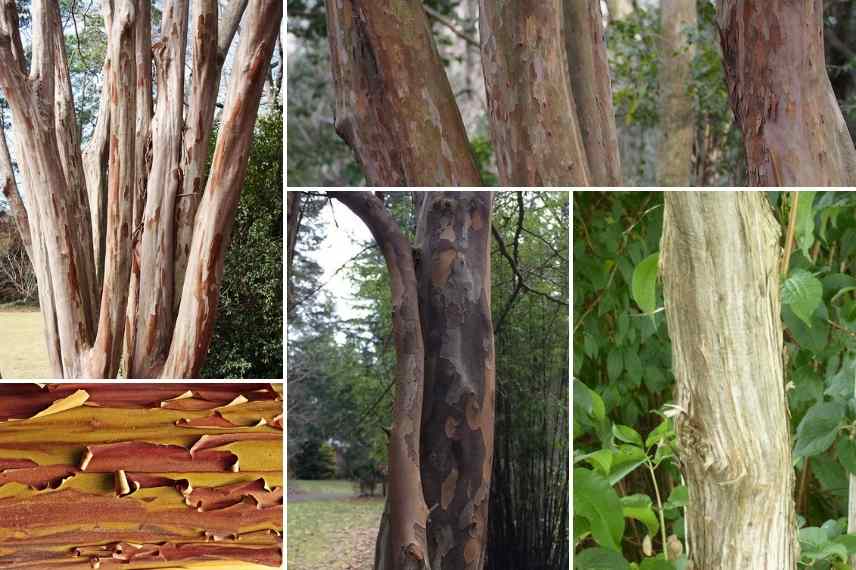
Lagerstroemia (crape myrtle), Clethra barbinervis (© H. Koh), strawberry tree, Stewartia pseudocamellia (© J. Neorr), and Heptacodium (© G. David)
Finally, bamboo culms actually form sculptural bark when foliage at their base is neatly cleared: black tones (Phyllostachys nigra), orange (Phyllostachys aureosculata ‘Aureocaulis’), yellow striated with green (Phyllostachys aureoscultata ‘Spectabilis’)

Find out more
Bark really changes depending on tree age, but also on exposure and humidity. Too much sun will burn some bark; high humidity affects colour, usually accentuating and brightening it. Some require a ‘grooming’ to remove mosses and lichens that would detract from bark beauty. Check these specific points before making your choice.
French author Cédric Pollet’s bestseller, published in 2008, remains the reference on barks. I invite you to browse it, as it features photographs of rare beauty and great inspiration. His book on “Winter gardens” is another fine volume, offering a skilful inventory of plants making up sublime “Winter gardens”.
- Subscribe!
- Contents
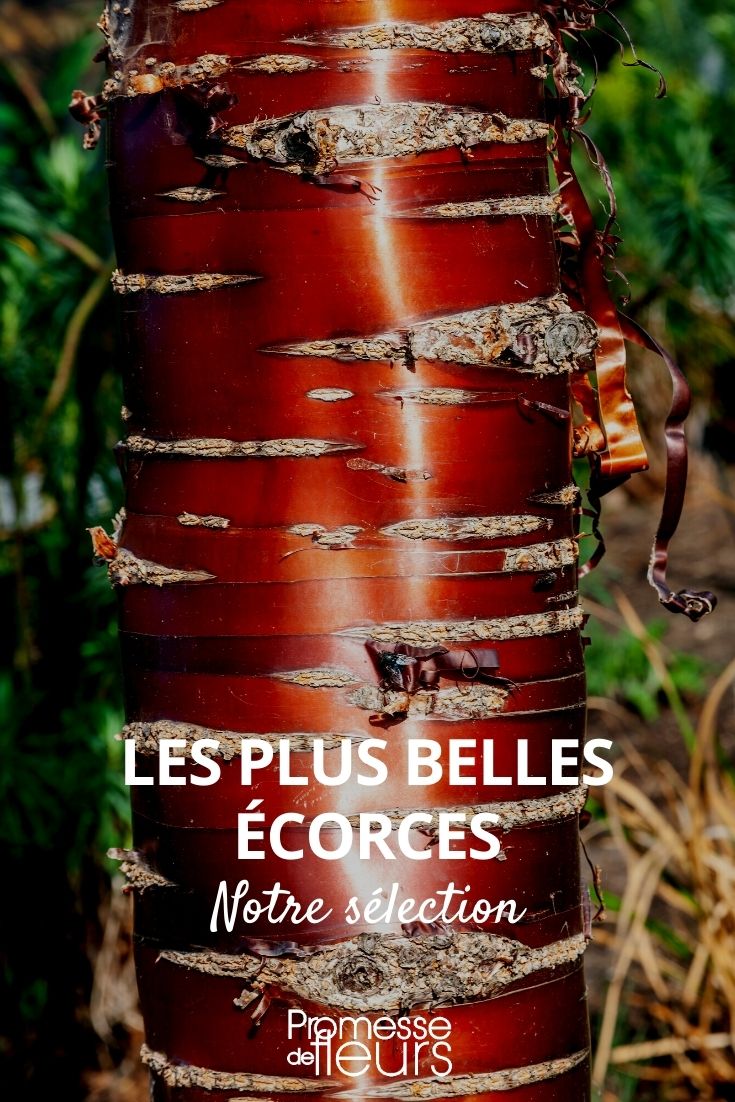































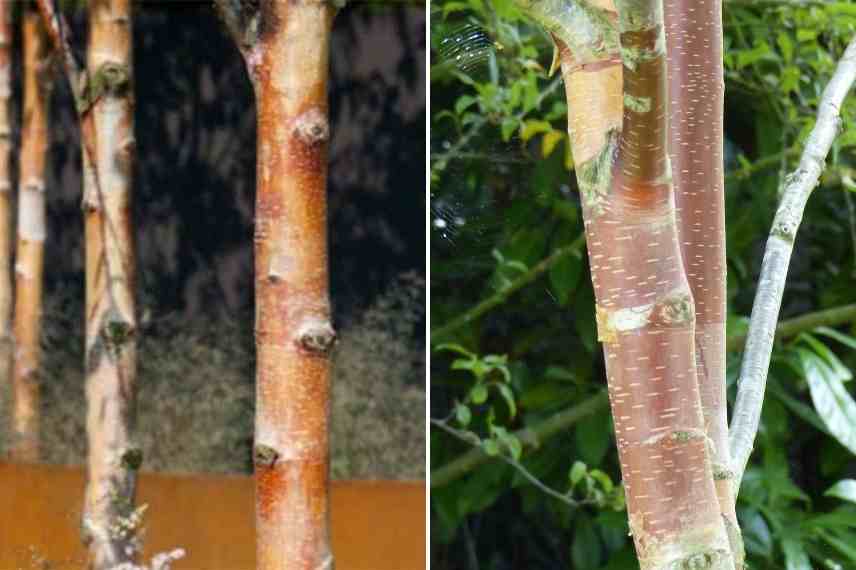
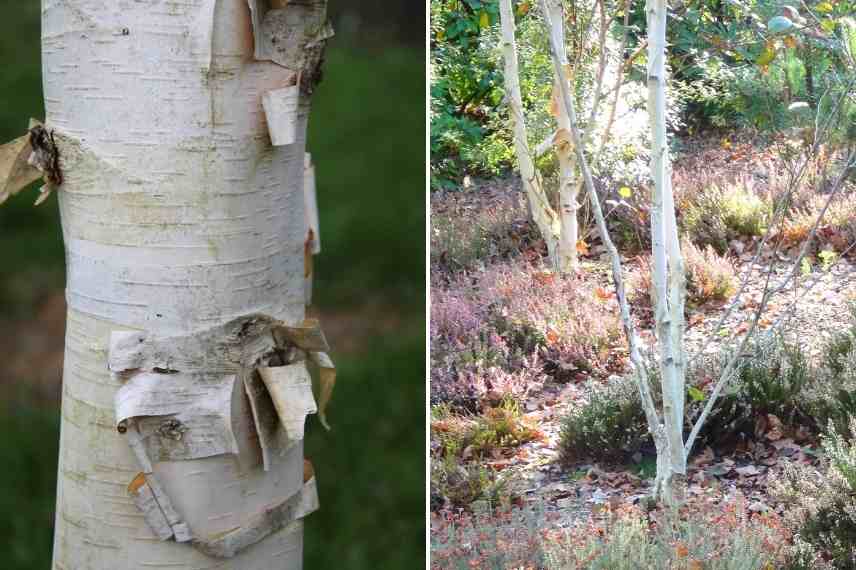
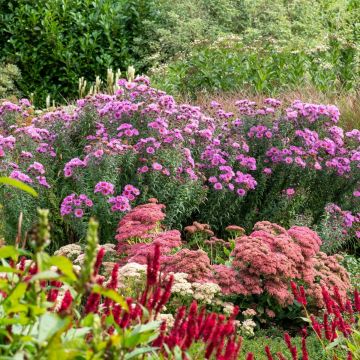
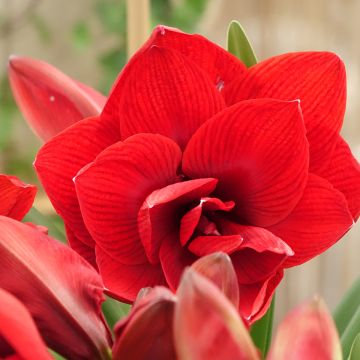

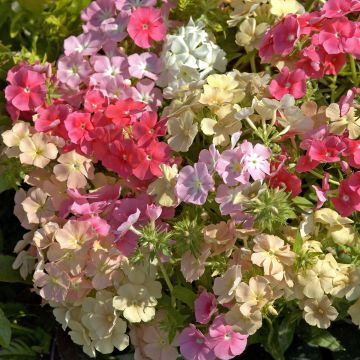
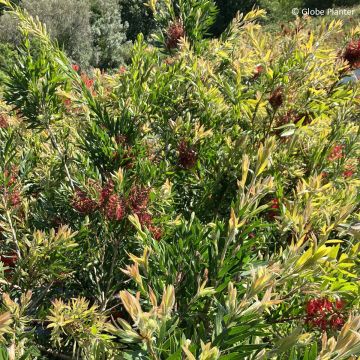
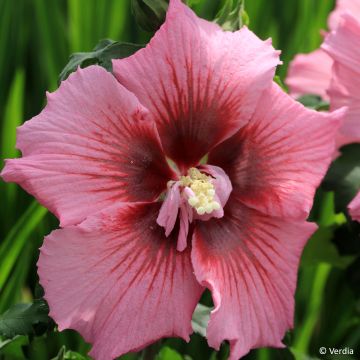
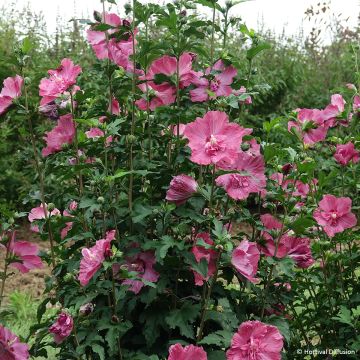
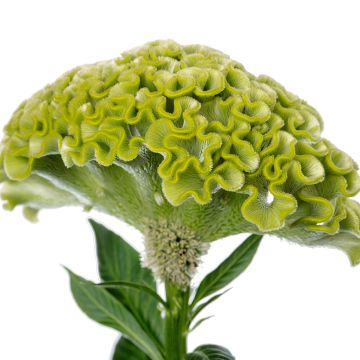
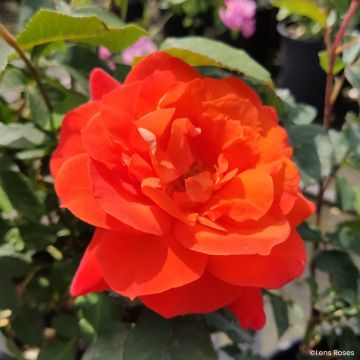
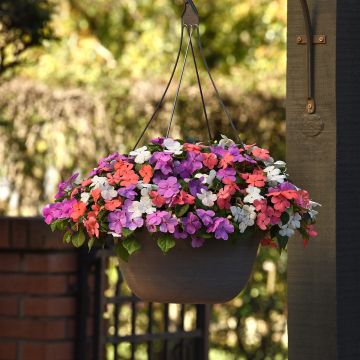
Comments